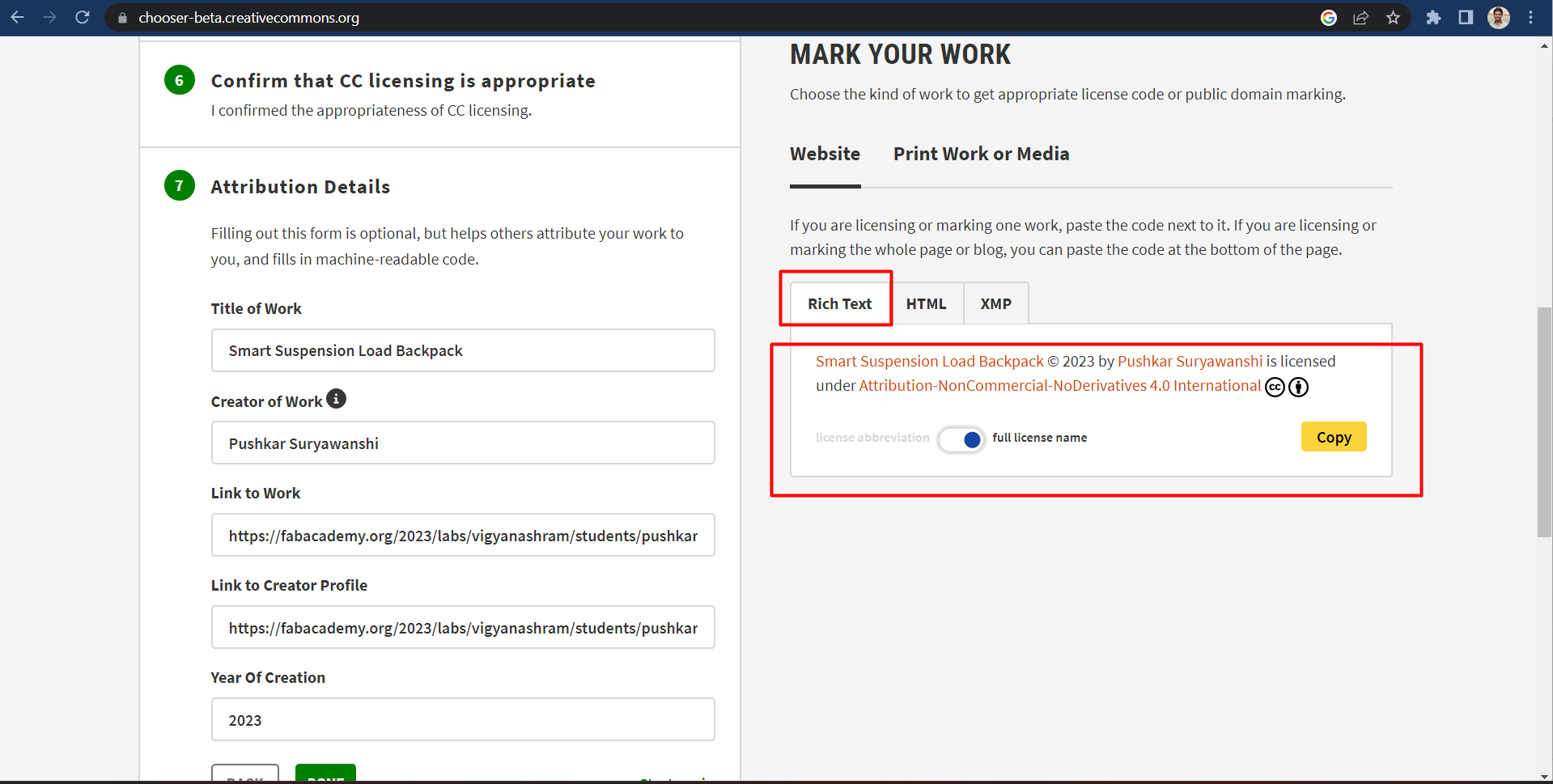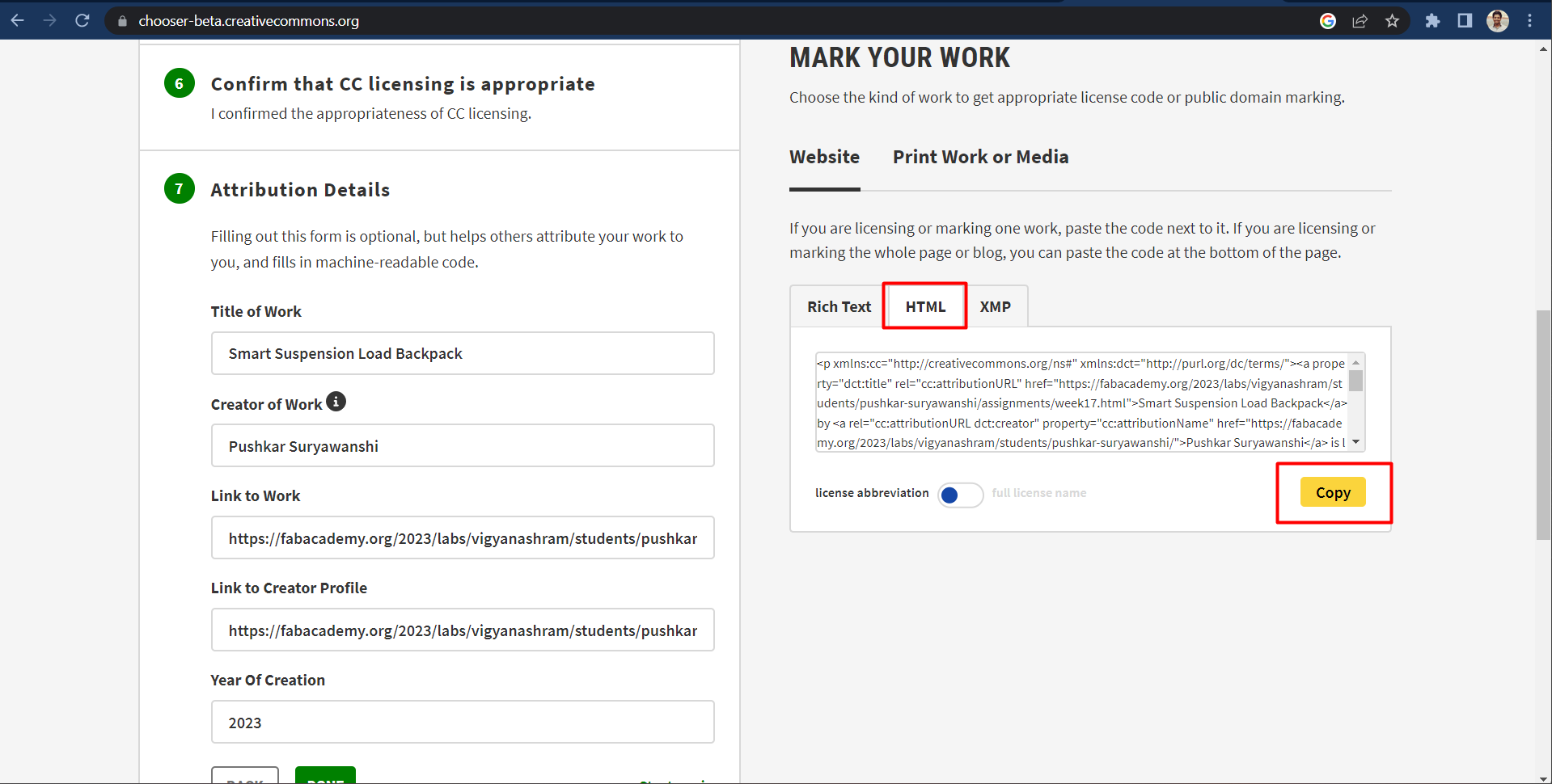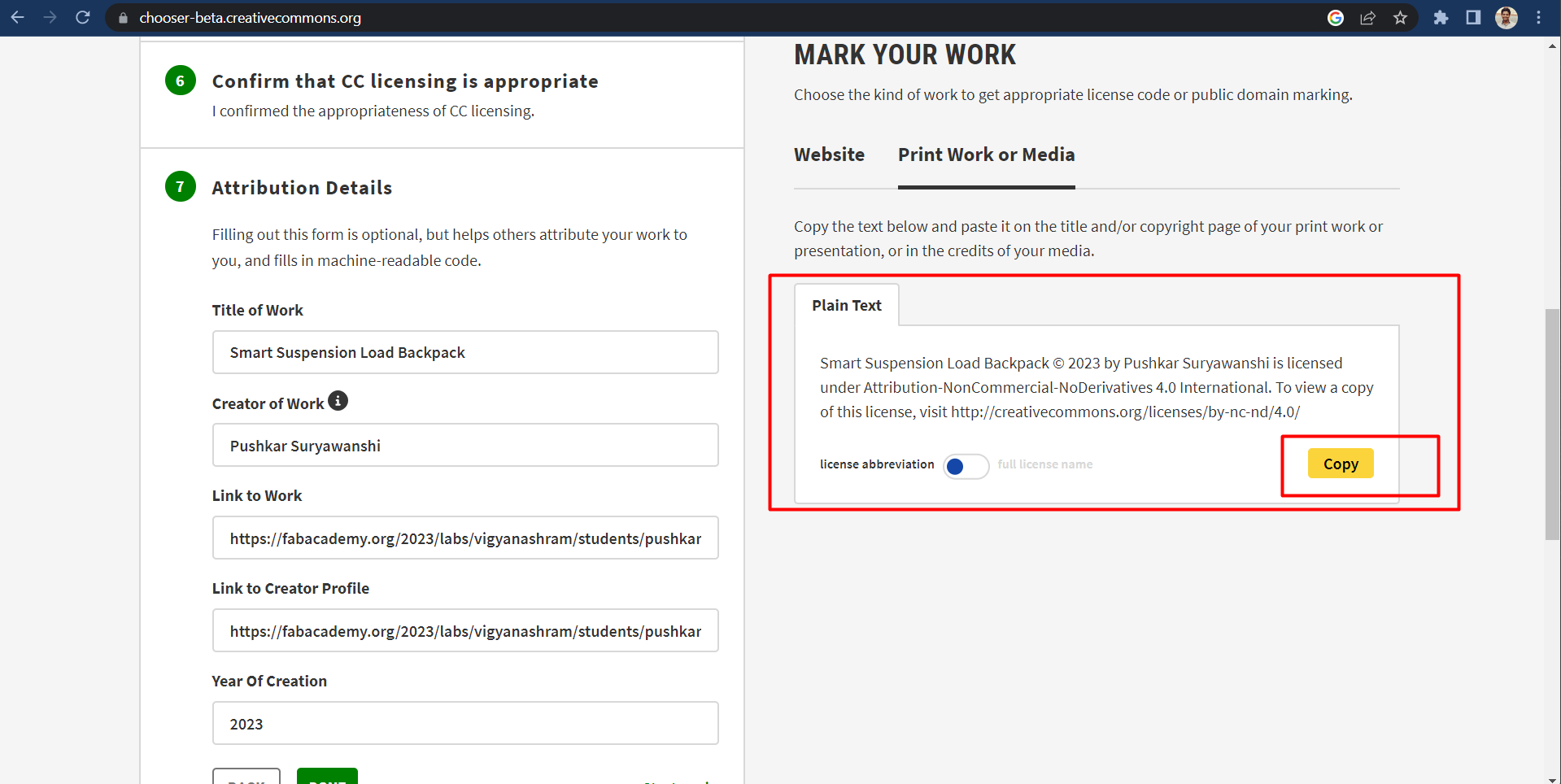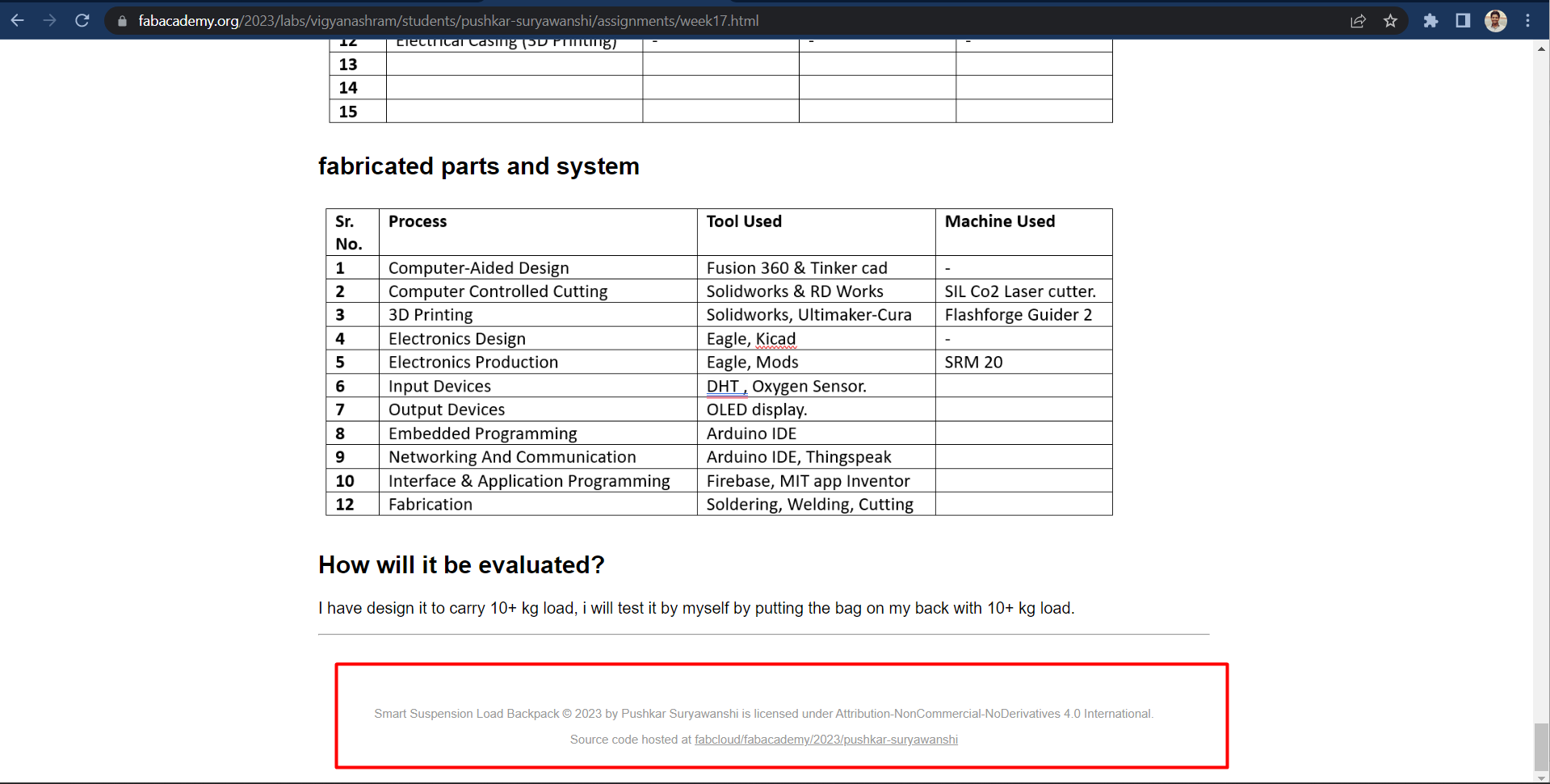Invention, Intellectual Property, and Income
Week 17 Assignment summary
During the week, I learned about Invention, Intellectual Property rights, and their different types. As I am about to complete my final project, so through the learning of this assignment. I tried to issue a copyright for my project work.
Here, I am documenting all of my work for this week.
Basics of Invention and Intellectual Property.
What is an invention?
- Invention is the process of creating something entirely new, a breakthrough that brings about a novel concept, product, or technology. It embodies the human capacity for innovation and ingenuity. An invention can range from a simple everyday tool to a groundbreaking scientific discovery. It involves transforming ideas into tangible realities that revolutionize the way we live, work, and interact with the world. Inventions have the power to enhance efficiency, solve problems, and improve the quality of life. They are vital drivers of progress and significantly shape society, economy, and culture.
Rephrased through ChatGPT.
Types of Inventions
Scientific-technological inventions
Smartphones, artificial intelligence, renewable energy systems, and medical breakthroughs are examples of scientific-technological inventions. They revolutionize communication, enhance productivity, promote sustainability, and improve healthcare, shaping a brighter future for humanity.
Rephrased using ChatGPT
Sociopolitical inventions comprise-
Examples of sociopolitical inventions include the establishment of democratic systems, the formation of human rights frameworks, the development of social welfare programs, and the creation of international treaties and agreements to promote peace, equality, and cooperation among nations.
Rephrased using ChatGPT
Humanistic inventions encompass
Humanistic inventions encompass creations that prioritize human well-being and foster positive social impact. Examples include accessible healthcare technologies, inclusive educational tools, sustainable farming practices, and assistive devices for people with disabilities. These inventions aim to enhance human lives and promote equality, compassion, and dignity.
Rehrased using ChatGPT
What is Intellectual Property (IP)?
Intellectual Property (IP) refers to the legal rights granted to individuals or entities for their original creations of the mind. It encompasses various forms of intangible assets, such as inventions, designs, trademarks, copyrights, and trade secrets. IP protection grants exclusive rights to the creator, enabling them to control and exploit their creations commercially. It serves as an incentive for innovation, fostering creativity and encouraging investment in research and development. By safeguarding these intangible assets, IP laws promote economic growth, encourage competition, and protect the rights of inventors and creators, ensuring they receive recognition and reward for their contributions.
Rephrased using ChatGPT.
Types of Intellectual Property Rights
patent
Patents are legal protections granted to inventors for their new inventions or discoveries. They provide exclusive rights, allowing inventors to prevent others from making, using, or selling their inventions without permission. Patents encourage innovation by giving inventors a period of exclusivity to profit from their creations. They promote research and development, as well as economic growth, by incentivizing inventors to disclose their inventions in exchange for the exclusive rights provided by the patent system.
Rephrased using ChatGPT>
Copyright
Copyrights are legal protections that grant exclusive rights to creators of original works, such as books, music, films, and artwork. These rights include the ability to reproduce, distribute, and publicly display their creations. Copyrights help creators control the use and distribution of their work, ensuring they receive recognition and financial benefits. Copyright infringement occurs when someone uses copyrighted material without permission, leading to legal consequences.
Rephrased using ChatGPT.
Trademarks
Trademarks are distinctive symbols, names, logos, or phrases that identify and differentiate products or services of one company from others. They provide legal protection to the owner by preventing unauthorized use and confusion in the marketplace. Trademarks help build brand recognition, trust, and reputation. They play a crucial role in marketing and business strategies, allowing consumers to associate quality and attributes with specific brands, fostering consumer loyalty and facilitating fair competition.
Rephrased using ChatGPT.
Trade dress
Trade dress in intellectual property refers to the visual appearance and overall image of a product or service that distinguishes it from others in the marketplace. It includes elements such as packaging, design, color schemes, and symbols. Trade dress protection prevents unauthorized use of these distinctive features, ensuring consumers can identify and associate the product or service with a particular source or brand.
Rephrased using ChatGPT>
Trade secrets
Trade secrets are a form of intellectual property (IP) that encompass confidential information, such as formulas, processes, techniques, or customer lists, which provide a competitive advantage to a business. Unlike patents or copyrights, trade secrets are protected by maintaining their secrecy. They can be valuable assets as they offer exclusive knowledge and business advantages. Companies safeguard trade secrets through non-disclosure agreements, employee contracts, and strict security measures to prevent unauthorized access or use by competitors.
Rephrased using ChatGPT.
Dissemination plan for my Final project:
Who is my project for?
- My project is dedicated to School students, Trekkers, and Army soldiers all the backpack users who carry lots of weight in their backpacks.
How is it funded?
- As I am developing the first prototype of my project so I have used the facilities of Fab Academy and basic and cheap components.
Business plan and funding for scaling up.
- As this project requires lots of modifications before commercializing it, I will try for the DST Prayas scheme to rising funds for further modifications.
The license was chosen or something else to protect the intellectual properties of my project:
- Yes, I have chosen a license provided by Creative Commons.
How will I raise awareness of my project amongst the target group:
- After making it available for commercial use, I will provide a free trail to the consumer, will collect their feedback and then doing modifications based on their feedback, I will start selling them.
Future Possibilities for My Final Project:
- By Developing the MVP of my product, as will start selling it by collecting a few funds through myself by doing company incorporation.
- Or I can contact different manufacturers working in this field for collaborating with them.
Creating a license on Creative Common for the Final project:
Opened Creative commons website.

Then, I clicked on “share your work” tab.

After that there are some instructions provided by creative commons, we need to click on get started button after reading those details.

As they are currently testing a newer version of their site, so they requested us to use the beta version.

We need to insert information to fill in the details for license creation, I need help while filling these details so I choose second option.

They I click the first option as I will permit others to use my work with attribution.

They I have selected second option as I don’t want to permit people to use my work for commercial purpose.

I didn’t give permission to others for remixing and adapting my work.

Then at the end, I selected all the boxes checked.

Then I added basic attribution details like Title, Name, Link Profile integration, etc click on done. After this procedure, I am all most up there.

Then I have copied both the HTML code and rich text to use these attribution in my page.



Final Results.
